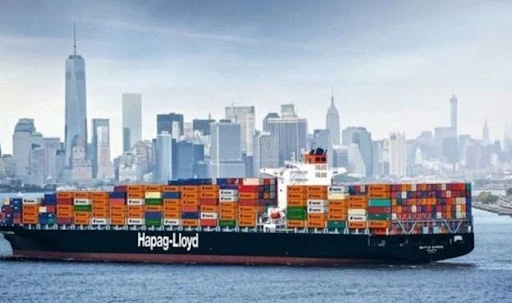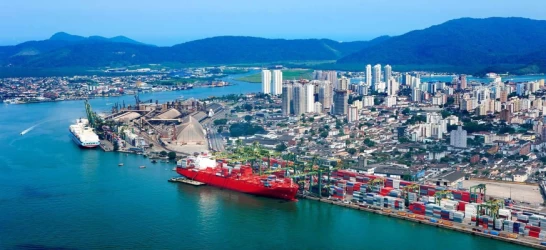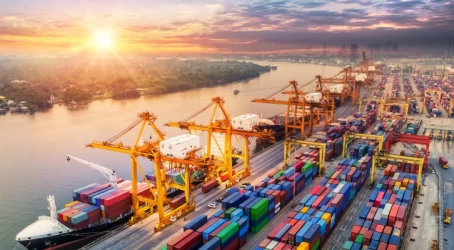Sea freight in Colombo port
Colombo Port, located in Sri Lanka, is one of the most significant maritime hubs in South Asia. Due to its strategic position in the Indian Ocean, it serves as a critical gateway for international trade between the East and the West. Over the years, Colombo Port has undergone extensive modernization, making it a vital player in global shipping and logistics. This article will provide an in-depth analysis of maritime transportation at the Port of Colombo, exploring its infrastructure, economic significance, challenges, and future opportunities.
Historical Background of Colombo Port
The history of Colombo Port dates back to ancient times when it was a key trading hub for spices and goods traveling along the maritime Silk Road. The port gained prominence during the colonial period under Portuguese, Dutch, and later British control. Modernization of the port began during British rule, and today it stands as one of the largest and most advanced ports in South Asia.
Infrastructure of Colombo Port
The Port of Colombo boasts state-of-the-art infrastructure, making it capable of handling large volumes of cargo. The port has several key components:
- Container Terminals: Colombo has multiple container terminals, including the South Asia Gateway Terminal (SAGT), the Colombo International Container Terminal (CICT), and the Jaya Container Terminal (JCT). These terminals are equipped with modern cranes and systems to handle ultra-large container ships.
- Deepwater Berths: Colombo Port has deepwater berths that can accommodate some of the world’s largest vessels. This is crucial for international shipping companies looking to make Colombo a transshipment hub for cargo destined for Europe, the Middle East, and Asia.
- Transport Connectivity: The port is well-connected to Sri Lanka’s road and rail networks, ensuring the smooth transport of goods from the port to various parts of the country and beyond. This connectivity enhances Colombo’s role as a key player in regional logistics.
- Advanced Equipment: The use of automated systems and modern equipment significantly boosts the port's efficiency. These innovations help reduce turnaround times and enhance the overall operational capacity of the port.
Economic Significance of Colombo Port
Colombo Port is the economic lifeline of Sri Lanka and a major contributor to the regional economy.
- International Trade Hub: As the main gateway for Sri Lankan exports and imports, Colombo handles a vast majority of the country’s maritime trade. It is also a key transshipment hub for goods moving between Asia, Europe, and the Middle East.
- Employment: The port generates a significant number of direct and indirect jobs in sectors such as shipping, logistics, transportation, and warehousing. It is an important source of income for thousands of families.
- Transshipment Operations: Colombo Port is strategically positioned to serve as a transshipment hub, particularly for Indian and other South Asian markets. Its location allows it to serve as a stopover point for vessels on the major east-west trade routes.
- Economic Growth: The port plays a critical role in the country's economic growth by facilitating trade and attracting foreign investment in infrastructure projects.
Challenges Facing Colombo Port
Despite its strengths, Colombo Port faces several challenges that could impact its future growth.
- Congestion and Capacity Issues: As one of the busiest ports in the region, Colombo often faces congestion, particularly during peak seasons. The increasing volume of ships and cargo has led to delays and inefficiencies that need to be addressed through further expansion and optimization.
- Environmental Impact: Like many large ports, Colombo’s operations have an environmental footprint. The port faces pressure to adopt greener practices, such as reducing emissions, managing waste, and preserving marine ecosystems.
- Climate Change: Rising sea levels and extreme weather events pose long-term risks to Colombo Port’s operations. The port needs to invest in resilient infrastructure to mitigate the effects of climate change on maritime transportation.
Future Opportunities for Development
There are several opportunities that Colombo Port can leverage to solidify its position as a leading maritime hub.
- Expansion of Port Capacity: Colombo is planning several expansion projects, including the development of the East Container Terminal (ECT), which will increase the port’s container-handling capacity and reduce congestion.
- Digital Transformation: The adoption of smart technologies such as automation, artificial intelligence, and blockchain can improve the port’s efficiency and transparency. These technologies will also enhance the port’s ability to handle large volumes of cargo while reducing human error.
- Sustainable Practices: There is growing global pressure for ports to adopt more sustainable operations. Colombo has the opportunity to lead the region by investing in renewable energy, reducing emissions, and promoting green shipping practices.
- Regional Cooperation: Colombo Port can strengthen its role in regional maritime networks by fostering stronger ties with other South Asian countries. Collaborative efforts in logistics, security, and port development can position Colombo as a regional leader in shipping and trade.
Conclusion
The Port of Colombo plays a crucial role in global maritime trade and serves as a vital economic asset for Sri Lanka. With its modern infrastructure, strategic location, and potential for expansion, Colombo is well-positioned to continue its growth as a major transshipment hub in the Indian Ocean. However, addressing challenges such as congestion, environmental sustainability, and climate resilience will be key to its future success. By leveraging technological innovations and expanding its capacity, Colombo Port can remain a competitive player in the global shipping industry for years to come.
If you have any specific questions or need further assistance, feel free to ask!











